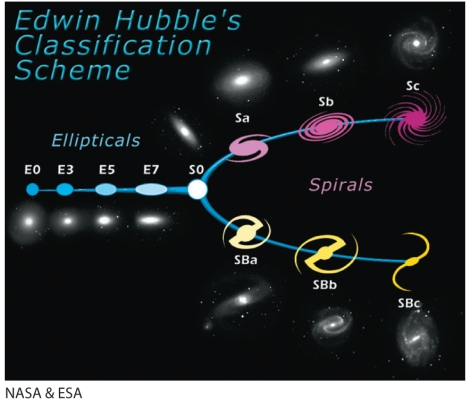How do galaxies evolve on the Hubble tuning-fork classification scheme and what is the evolutionary significance of this diagram, shown in Figure 17-15 of the text? 
A) About three-quarters of galaxies do not evolve, but others can change their position. Usually, spiral galaxies merge to form ellipticals.
B) The "young" irregular and lenticular galaxies in the center of the tuning fork evolve to either elliptical galaxies if the material is metal-poor or spiral galaxies if the material is metal-rich.
C) Stars slowly die and the spiral arms slowly spin up and tighten to transform spiral galaxies into elliptical galaxies.
D) Elliptical galaxies slowly condense and spin up to form spiral galaxies, the increasing stellar collisions forming the interstellar material in the spiral arms.
Correct Answer:
Verified
Q94: Who developed the tuning-fork diagram connecting the
Q95: The Magellanic Clouds as seen from the
Q96: What are the Magellanic Clouds?
A) Type I
Q97: When swirling eddies of gas-rich matter in
Q98: Who developed the classification system that divides
Q100: Galaxies in the universe are
A) distributed randomly,
Q101: Clusters of galaxies can be rich or
Q102: The Milky Way Galaxy is a(n)
A) member
Q103: What is the galaxy content of rich,
Q104: Which of these bodies is NOT one
Unlock this Answer For Free Now!
View this answer and more for free by performing one of the following actions

Scan the QR code to install the App and get 2 free unlocks

Unlock quizzes for free by uploading documents